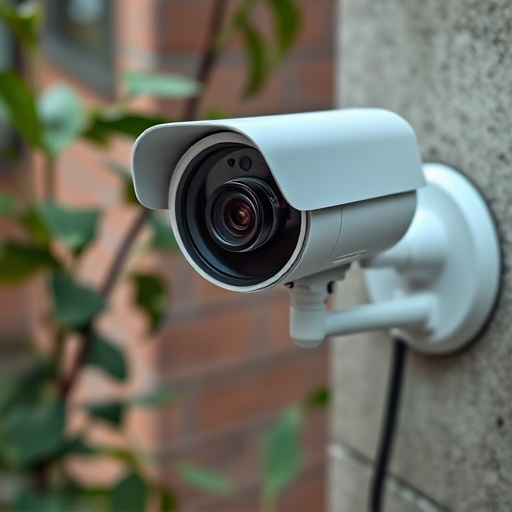Motion-activated dummy security cameras, installed outdoors in high-risk areas, mimic functional CCTV to deter burglars through lights, sounds, and fake video feeds. They offer cost-effective, easy-to-use security for homes and businesses without complex setup or maintenance contracts. Features include wireless connectivity, motion detection, night vision, and alerts via smartphone apps. Strategic placement in high-traffic areas is crucial for optimal effectiveness, but users must comply with local privacy laws regarding camera placement and consent.
“Uncover the power of Motion Activated Dummy Security Cameras, a smart and cost-effective way to enhance home or business security. This comprehensive guide explores how these innovative devices mimic real cameras, deterring criminals with their presence alone. From understanding their basic function to choosing the right type and installing them strategically, we delve into the benefits and practical aspects. Learn about legal considerations and privacy, ensuring peace of mind while utilizing this useful tool in today’s security landscape.”
- Understanding Motion-Activated Dummy Security Cameras
- Benefits of Using Imitation Security Cameras
- Types and Features of These Devices
- Installation and Placement Tips
- Legal Considerations and Privacy Concerns
Understanding Motion-Activated Dummy Security Cameras
Motion-activated dummy security cameras, also known as decoy or simulacrum cameras, are designed to look like real security equipment but serve a different purpose. They mimic the appearance and placement of functional security cameras, luring potential intruders while actually providing no actual surveillance capability. These devices activate with motion sensors, triggering lights or sounds to startle and deter would-be burglars, making them an effective deterrent for crime.
Understanding how these cameras work is key to their successful deployment. They are typically installed outdoors in areas prone to theft or vandalism. The motion sensor’s range and sensitivity can be adjusted to detect movement within a specific zone, ensuring the camera triggers only when necessary. When activated, the decoy camera may display flashing lights, play a loud alarm, or even emit a simulacrum video feed to create the illusion of active surveillance, discouraging criminals from targeting the property.
Benefits of Using Imitation Security Cameras
Using imitation security cameras, specifically motion-activated dummy security cameras, offers a range of benefits for both residential and commercial properties. One of the primary advantages is their cost-effectiveness compared to real security cameras. These fake cameras act as powerful deterrents against potential intruders, misleading would-be thieves into believing your property is under constant surveillance. This psychological effect can significantly reduce break-in attempts, providing peace of mind for homeowners and business owners alike.
Moreover, motion-activated dummy security cameras provide a simple yet effective solution for those looking to enhance their security without complex installation processes. Unlike traditional security systems, these imitation cameras don’t require professional setup or ongoing maintenance contracts. They can be easily placed in strategic locations around your property, making them an accessible and affordable option for anyone seeking to boost their home or business security measures.
Types and Features of These Devices
Motion-activated dummy security cameras come in various types, each designed for specific needs and preferences. These devices mimic real security cameras, featuring a lens, LED indicators, and a housing that resembles traditional CCTV cameras. Some models offer wireless connectivity, allowing users to monitor their properties remotely via smartphone apps or web interfaces.
The key feature that sets them apart is their motion detection capability, typically using passive infrared (PIR) sensors or advanced digital signal processing (DSP) algorithms. When triggered by movement, these cameras capture high-resolution footage and send alerts to the user’s device. Additional features may include night vision, two-way audio, and cloud storage options, enhancing their functionality and appeal for homeowners and businesses alike.
Installation and Placement Tips
When installing motion activated dummy security cameras, strategic placement is key. Position them in areas with high foot traffic or where potential intruders might approach, such as entryways, windows, and backyards. Ensure they are visible enough to deter theft or vandalism while blending seamlessly into your environment to avoid drawing unnecessary attention.
Consider using mounting hardware that allows for adjustable angles and heights, enabling you to customize the camera’s field of view. Regularly test the motion sensors to ensure they’re functioning optimally and adjust placement if necessary. Remember, these dummy cameras serve as a powerful deterrent, offering peace of mind and an extra layer of home security without the need for expensive surveillance systems.
Legal Considerations and Privacy Concerns
Using motion activated dummy security cameras can bring peace of mind, but it’s crucial to consider the legal and privacy implications. In many jurisdictions, capturing or recording video footage without explicit consent is a violation of privacy laws. While dummy cameras are designed to look like real security equipment, their primary function is to deter crime through appearance alone, not active surveillance.
Homeowners and businesses should thoroughly research local regulations regarding surveillance technology. Some areas have strict guidelines on where and how cameras can be installed, with restrictions on recording certain spaces, like bathrooms or bedrooms. Additionally, clear signage indicating the presence of security cameras is often legally required to inform individuals that they are being recorded. Using motion-activated dummy cameras in compliance with these laws ensures a legitimate security measure while respecting privacy rights.
Motion-activated dummy security cameras offer a cost-effective and discreet way to enhance home or business security. By simulating real surveillance, these devices act as powerful deterrents against potential intruders, providing peace of mind without the need for extensive surveillance systems. Understanding their functionality, benefits, and proper use is essential in leveraging this innovative technology while adhering to legal boundaries and respecting privacy.
